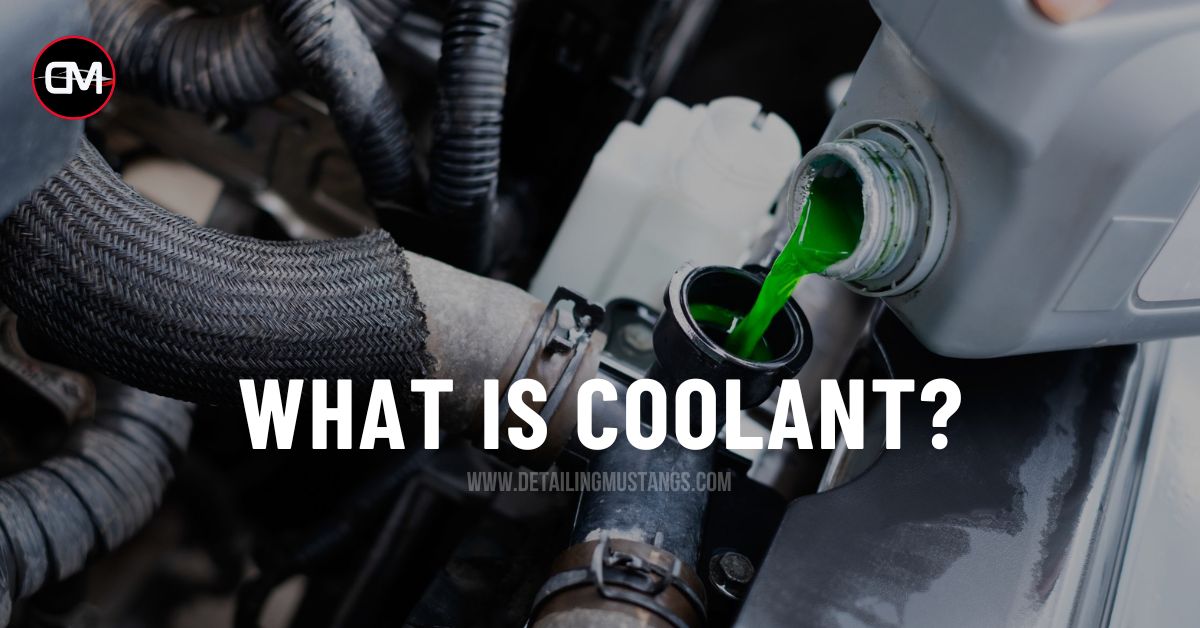Decoding the Coolant Conundrum: What is Coolant and Why Your Engine Loves It!
Introduction:
Picture this: You’re cruising down the highway, wind in your hair, music blasting, and the freedom of the open road ahead. Life is good. But have you ever popped the hood of your car and wondered about the colorful liquid that seems to have its own secret life under there? That magical elixir is what keeps your engine from throwing a fit and calling it quits – it’s called coolant.
Now, I know what you’re thinking. Coolant, antifreeze, radiator juice – it goes by many names, but what’s the real deal behind this unsung hero of your vehicle? Today, let’s embark on a journey to demystify the world of coolant. It’s more than just a liquid; it’s the guardian angel your engine never knew it needed.
So, grab a metaphorical seatbelt and buckle up – we’re about to explore the fascinating world of coolant, from its basic definition to the intricate dance it performs under your hood to keep things running smoothly. Let’s peel back the layers and discover why this seemingly ordinary liquid is anything but ordinary.
A. The Basics of Coolant
Imagine your car engine as a bustling city, with all its parts working together to keep things running smoothly. In this bustling metropolis, coolant plays the role of the unsung hero – the city’s climate control system. So, what’s the deal with this mysterious liquid?
Definition of Coolant:
In the simplest terms, coolant is like the magical elixir that keeps your engine from turning into a meltdown party. It’s a specially crafted liquid designed to play the ultimate referee in the heated game of your car’s internal combustion. Just as you wouldn’t want to work in a scorching desert without air conditioning, your engine needs coolant to maintain a cool and collected demeanor.
Primary Function:
Now, let’s talk about its main gig. Coolant, also known as antifreeze, isn’t just some colorful liquid taking up space under your hood – it’s on a mission. Picture this: as you rev up your engine, things start to heat up. That’s where coolant steps in, donned in its superhero cape. It circulates through the intricate network of your engine, like a diligent traffic cop, absorbing the heat generated during the combustion process.
But it doesn’t stop there – oh no. Coolant is on a journey to save the day. It transports all that absorbed heat to the radiator, where a cooling breeze (courtesy of the air passing through as you drive) helps it dissipate into the atmosphere. It’s like sending the engine’s excess heat on a vacation, leaving your car’s vital components cool, calm, and collected.
So, in a nutshell, coolant is the engine’s own personal temperature manager, ensuring things stay just right – not too hot, not too cold, but just perfect for a smooth ride down the metaphorical highway of your daily adventures. Next time you glance under the hood, give a nod of appreciation to that colorful liquid – your engine’s unsung hero.
B. Types of Coolant
Now that we’ve uncovered the superhero status of coolant, let’s talk about its alter egos – the different types of coolants. It turns out, not all coolants are cut from the same cloth. There are two main characters in this colorful liquid saga: ethylene glycol and propylene glycol. But, the burning question is, which one is the right sidekick for your car’s crime-fighting engine?
Different Types of Coolants:
Coolants, like any good superhero duo, come in different flavors. Ethylene glycol and propylene glycol are the dynamic duo of the coolant world. Ethylene glycol is the more common variety, found in many off-the-shelf coolants. On the other hand, propylene glycol is known for being more environmentally friendly and is often used in newer, eco-conscious formulations.
Now, you might be thinking, “Why do I need to choose? Can’t I just grab any coolant off the shelf?” Ah, my friend, here’s where the plot thickens.
Importance of Using the Correct Type:
Using the wrong coolant for your car is a bit like trying to fit a square peg into a round hole – it just won’t end well. Each type of coolant is formulated with specific properties that cater to different engine materials and designs.
Imagine your engine as a delicate ecosystem, and the coolant as its lifeblood. Introducing the wrong type is like inviting an unwelcome guest to a party – it can lead to chaos. Ethylene glycol and propylene glycol have distinct chemical compositions, and using the incorrect one might result in reduced cooling efficiency or, worse, engine damage.
So, here’s the lowdown: it’s crucial to know which type of coolant suits your vehicle. Check your car’s manual or consult with your trusted mechanic to ensure you’re pouring in the right potion. Using the correct coolant not only keeps your engine running smoothly but also prevents potential headaches down the road. After all, you wouldn’t want to jeopardize your engine’s well-being by playing mix-and-match with its coolant, would you? Choose wisely, and your engine will thank you with purrs of satisfaction.
C. How Does Coolant Work?
Now that we’ve established that coolant is more than just a pretty liquid in your car, let’s get down to the nitty-gritty of how this magical elixir performs its temperature-regulating dance. It’s time to dive into the science behind the scenes and uncover the inner workings of our engine’s very own climate control system.
Exploring the Mechanics:
Alright, buckle up, because we’re about to venture into the heart of the matter. How does coolant work its magic to keep your engine from boiling over? Picture this: as your engine roars to life, it generates a tremendous amount of heat. Now, we can’t have our engines melting into a puddle of metal, can we? That’s where coolant steps in as the unsung hero.
Coolant, armed with its special formula, flows through the engine, acting like a sponge that soaks up all that excess heat. It’s like the engine’s personal cooling agent, ensuring things don’t get too toasty under the hood. But, of course, our hero needs a sidekick – enter the radiator and water pump.
The Role of the Radiator and Water Pump:
Let’s break it down. The radiator is like the engine’s own personal cool-down zone. Once the coolant has absorbed all that heat, it makes its way to the radiator. Picture the radiator as a cooling station – a place where the hot coolant meets the refreshing breeze of air, courtesy of your driving speed. This magical encounter allows the coolant to release the absorbed heat into the atmosphere, leaving it cool and ready for another round in the engine.
Now, every superhero duo needs a trusty sidekick, right? That’s where the water pump comes in. Think of the water pump as the engine’s loyal servant, tirelessly circulating the coolant through the engine and into the radiator. It ensures a continuous flow, preventing any hotspots from forming and keeping the entire system in harmony.
So, in a nutshell, the coolant, radiator, and water pump work in tandem to create a symphony of temperature regulation. It’s a carefully choreographed dance that keeps your engine running at the Goldilocks-approved temperature – not too hot, not too cold, but just right. The next time you’re on the road, cruising with the windows down, remember that under the hood, a perfectly orchestrated ballet is keeping your engine in its comfort zone. Coolant – the ultimate maestro of automotive temperature control.
D. Signs Your Coolant Needs Attention
Alright, so we’ve established that coolant is the unsung hero of engine temperature control. But, like any hero, it sometimes needs a little love and attention. How do you know when your coolant is waving a distress signal, desperately in need of some tender loving care? Let’s explore the signs and symptoms that your coolant might be in need of a check-up.
How do you know when your coolant needs a little TLC?
- The Temperature Gauge is on the Rise: Keep an eye on your temperature gauge. If it’s creeping into the danger zone, your engine might be trying to tell you something – and that something is likely related to the coolant.
- Weird Smells: Ever caught a whiff of something sweet or oddly pungent while driving? That could be a sign of coolant leaking. Take a moment to investigate if your nose detects anything out of the ordinary.
- Visible Leaks: Puddles of colorful liquid under your parked car? That’s not a modern art installation – it’s a sign that your coolant is making a break for it. Check for leaks, especially after your car has been sitting for a while.
What are the warning signs that your engine might be running too hot?
- Steamy Situation: If you see steam rising from under the hood, it’s not a cinematic effect – it’s a clear indication that your engine is hotter than it should be. Pull over and let things cool down before you continue your journey.
- Unusual Engine Noises: Engines are like symphonies, and any sudden change in the tune could be a red flag. If you hear strange noises, especially a bubbling sound, your coolant might be struggling to do its job.
- Overheating Warning Light: Modern cars come equipped with warning lights for a reason. If your dashboard is lighting up like a Christmas tree, pay attention. An overheating warning light is your car’s way of saying, “Houston, we have a problem.”
Visible Signs and Potential Consequences of Neglecting Coolant Maintenance:
- Corrosion and Rust: Neglecting your coolant can lead to corrosion and rust within the engine. This not only affects its performance but can also result in expensive repairs.
- Engine Damage: Overheating due to insufficient coolant can cause serious damage to your engine components. Think of it like sending your car’s internal parts to a sauna – they might not appreciate the spa treatment.
- Decreased Fuel Efficiency: A poorly maintained cooling system can also impact your fuel efficiency. It’s like asking your engine to run a marathon without proper hydration – it’s going to struggle.
In conclusion, your coolant is like a silent guardian, but it’s not immune to wear and tear. Pay attention to these signs, and when in doubt, don’t hesitate to give your coolant the attention it deserves. Because, after all, a little TLC can go a long way in ensuring your engine stays cool and happy for miles to come.
E. Coolant Maintenance Tips
So, we’ve uncovered the mysteries of coolant, learned about its superhero abilities, and identified the signs that it might be crying out for help. Now, let’s get down to business – how do we ensure that our coolant remains the caped crusader of our engine’s well-being? Here are some practical tips to keep your coolant in tip-top shape.
1. Routine Checks:
- Inspect for Leaks: Regularly check for any visible leaks under your car. Puddles of coolant are like distress signals, so if you spot them, it’s time for a closer look.
- Check the Coolant Level: Pop the hood and take a peek at the coolant reservoir. There should be a designated level indicator. If it’s below the recommended level, it’s time for a top-up.
2. Top-Ups:
- Use the Right Coolant: When topping up, ensure you’re using the correct type of coolant for your vehicle. Refer to your car’s manual or consult with your mechanic if you’re unsure.
- Mixing Ratios: Some coolants come in concentrated form and need to be mixed with water. Follow the recommended mixing ratios to maintain the coolant’s effectiveness.
- Top-Up Interval: Don’t wait until your coolant is waving the white flag. Regularly top up your coolant as needed to keep it at the optimal level.
3. Flushing the System Periodically:
- The Importance of Flushing: Over time, contaminants can build up in your coolant, affecting its performance. Periodic flushing of the entire cooling system helps remove these impurities, keeping your coolant fresh and effective.
- Follow Manufacturer Recommendations: Check your car’s manual for the manufacturer’s recommendations on when to flush the coolant. It’s usually a task that needs attention every few years or as specified in your vehicle’s maintenance schedule.
- Professional Maintenance: While topping up coolant is a DIY-friendly task, flushing the system may require professional assistance. Consider including this as part of your routine maintenance during a visit to your trusted mechanic.
4. Keep an Eye on the Temperature Gauge:
- Monitor the Gauge: Your car’s temperature gauge is like the heartbeat monitor of your engine. If it starts to climb into the danger zone, it’s a sign that your coolant might need some extra love.
- Respond Promptly: If you notice any unusual temperature spikes, don’t ignore them. Pull over, let your engine cool down, and investigate the issue. It could be a simple coolant top-up or a sign of a more significant problem that needs attention.
By incorporating these practical tips into your car care routine, you’ll be ensuring that your coolant remains the trusty sidekick your engine deserves. Remember, a little proactive maintenance goes a long way in keeping your engine cool, happy, and ready for all the adventures ahead.
Conclusion:
In the grand symphony of your car’s mechanical orchestra, the coolant emerges as the unsung hero, the guardian angel against the looming threat of engine meltdown. Beyond being a mere liquid, it’s a specially crafted elixir that orchestrates a ballet of temperature control, ensuring your engine stays cool and collected.
The next time you lift that hood, spare a moment to acknowledge the vital role your coolant plays. A simple routine check, a timely top-up, and periodic flushing – these are the small gestures that ensure your engine’s well-being. In this dynamic partnership, your car rewards you with the promise of smooth rides for miles to come.
So, here’s to the colorful liquid beneath your hood, the silent protector of your engine’s equilibrium. Treat your coolant with the attention it deserves, and you’ll find your car responding with the reliability and resilience of a well-maintained companion on the road of your automotive adventures. Cheers to the coolant – the unsung hero that keeps your engine’s story running smoothly.







